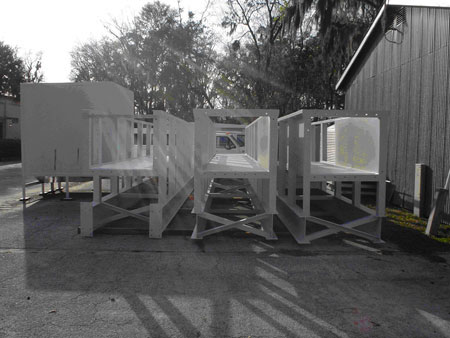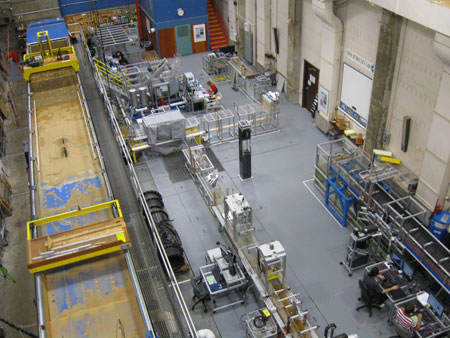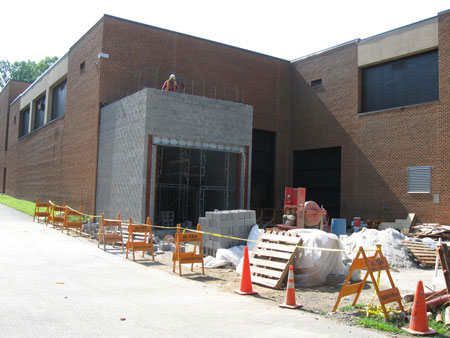U.S. Department of Transportation
Federal Highway Administration
1200 New Jersey Avenue, SE
Washington, DC 20590
202-366-4000
Focus
| Accelerating Infrastructure Innovations |
Publication Number: FHWA-HRT-11-016
Date: August 2011
Printable Version (.pdf, 1.3 mb)
The recent expansion of the Federal Highway Administration's (FHWA) J. Sterling Jones Hydraulics Laboratory is enabling major new research studies on bridge scour, which will result in new and improved design equations and procedures.
Scour-the erosion of stream bed material around bridge foundations-is the leading cause of bridge failures in the United States. An analysis of bridge failure statistics for 12 States conducted by the New York State Department of Transportation found that 60 percent of the recorded bridge failures between 1966 and 2005 were the result of scour.
Located at FHWA's Turner-Fairbank Highway Research Center in McLean, Virginia, the expanded laboratory features the first high-speed sediment recirculation flume in the United States. Designed after the only existing high-speed flume in Auckland, New Zealand, and donated to the laboratory by the Florida Department of Transportation, the flume can be used to conduct live bed scour tests. These tests simulate the movement of riverbed material in water flowing upstream of a river crossing. Prior to the installation of the new flume, research could only be conducted on the more rare occurrence of clear water scour, where there is no movement of riverbed material.
"The new flume provides FHWA with a huge opportunity to conduct tests that are closer to actual field situations and expand the state of the knowledge," said Kornel Kerenyi of FHWA. "This will result in more accurate design methods and procedures."
Composed of several sections, including a sediment catch basin and a diffuser to return the water flow, the flume can be tilted and sediment recirculated. The flume's footprint is 33 m (110 ft) long x 3 m (10 ft) wide x 3 m (10 ft) high, while the main channel of the flume is 1 m (3.28 ft) wide.
Originally built in 1984 to study hydraulic flow and its effects on highway bridges, culverts, and storm inlets, FHWA's Hydraulics Laboratory modified its existing tilting flume in the late 1980s to study bridge scour hydraulics, following the 1987 failure of the Schoharie Creek I-90 Bridge in New York.
Planned new research studies that will use the high-speed sediment recirculation flume include an examination of pressure flow scour under live bed conditions. The study will also look at the influence of bridge piers on pressure flow, with the aim of developing new design equations on pressure flow scour to replace those currently found in FHWA's Hydraulic Engineering Circular No. 18 (HEC-18), Evaluating Scour at Bridges. This circular contains the standard guidance on bridge scour.
Another planned study will look at combined pier and pressure flow scour for live bed and clear water conditions. The study's goal is to develop new design equations for inclusion in the next edition of HEC-18.
For more information about the high-speed sediment recirculation flume or the work of FHWA's Hydraulics Laboratory, contact Kornel Kerenyi at FHWA, 202-493-3142 (email: kornel.kerenyi@fhwa.dot.gov). Information on the laboratory is also available at www.fhwa.dot.gov/research/tfhrc/labs/hydraulics. To download a copy of HEC-18, visit www.fhwa.dot.gov/engineering/hydraulics/library_listing.cfm.

FHWA's new high-speed sediment recirculation flume, prior to installation.

The J. Sterling Jones Hydraulics Laboratory at FHWA's Turner-Fairbank Highway Research Center in McLean, VA.

The recent construction of FHWA's expanded Hydraulics Laboratory is enabling major new research studies on bridge scour.